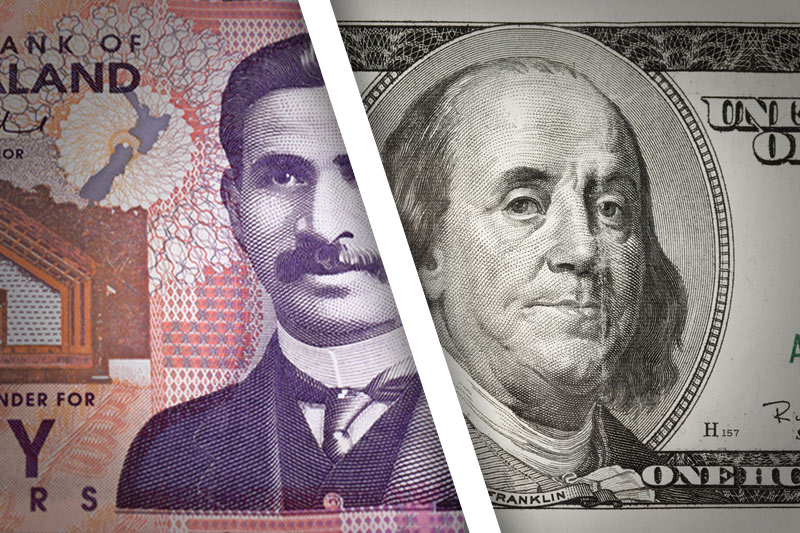Investing.com - The New Zealand dollar traded modestly higher against its U.S. rival during Monday’s Asian session despite some tepid data reports out of China, New Zealand’s largest export market.
In Asian trading Monday, NZD/USD rose 0.06% to 0.8328 after earlier trading as low as 0.8308. The kiwi nudged up 0.02% last week against the greenback. The pair is likely to find support at 0.8232, the low from October 10 and resistance at 0.8360, the high from September 2.
Earlier Monday, China’s National Statistics Bureau said the country’s producer price index (PPI) contracted 1.3% last month after falling 1.6% in August. Analysts expected a September decline of 1.4%.
In a separate report, the Statistics Bureau said China’s consumer price inflation rose to 3.1% last month from 2.6% in August. Analysts expected a September increase to 2.9%.
Over the weekend, China, the world’s second-largest economy said September exports contracted 0.3%, well below analysts’ estimates of growth of 6%. Imports rose 7.4%.
The kiwi has proven solid though not spectacular in a tricky environment for riskier currencies due to ongoing U.S. government shutdown, that country’s first since the 1990s. Policymakers met over the weekend, but could not come up with a solution to end the shutdown.
Uncertainty is increasing the lure of so-called safe haven currencies such as the yen and the Swiss franc and lessening demand for the riskier kiwi and Aussie currencies, according to the National Business Review.
The U.S has until October 17 to extend the debt ceiling or risk its first ever sovereign debt default.
Elsewhere, NZD/JPY fell 0.20% to 81.85 while AUD/NZD lost 0.17% to 1.1357 after the Australian Bureau of Statistics said that Australian home loans fell 3.9% last month after a 2.1% rise in August. Analysts expected a September decrease of 2.5%.
In Asian trading Monday, NZD/USD rose 0.06% to 0.8328 after earlier trading as low as 0.8308. The kiwi nudged up 0.02% last week against the greenback. The pair is likely to find support at 0.8232, the low from October 10 and resistance at 0.8360, the high from September 2.
Earlier Monday, China’s National Statistics Bureau said the country’s producer price index (PPI) contracted 1.3% last month after falling 1.6% in August. Analysts expected a September decline of 1.4%.
In a separate report, the Statistics Bureau said China’s consumer price inflation rose to 3.1% last month from 2.6% in August. Analysts expected a September increase to 2.9%.
Over the weekend, China, the world’s second-largest economy said September exports contracted 0.3%, well below analysts’ estimates of growth of 6%. Imports rose 7.4%.
The kiwi has proven solid though not spectacular in a tricky environment for riskier currencies due to ongoing U.S. government shutdown, that country’s first since the 1990s. Policymakers met over the weekend, but could not come up with a solution to end the shutdown.
Uncertainty is increasing the lure of so-called safe haven currencies such as the yen and the Swiss franc and lessening demand for the riskier kiwi and Aussie currencies, according to the National Business Review.
The U.S has until October 17 to extend the debt ceiling or risk its first ever sovereign debt default.
Elsewhere, NZD/JPY fell 0.20% to 81.85 while AUD/NZD lost 0.17% to 1.1357 after the Australian Bureau of Statistics said that Australian home loans fell 3.9% last month after a 2.1% rise in August. Analysts expected a September decrease of 2.5%.
